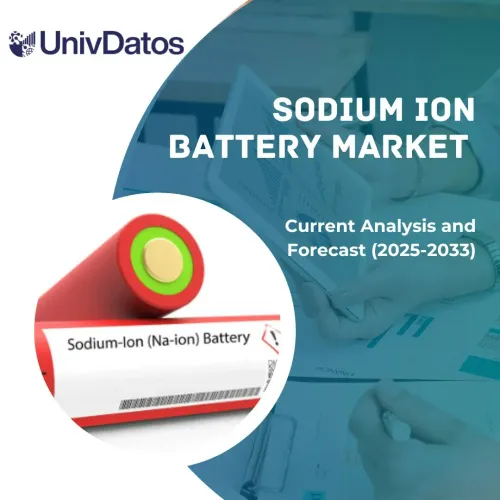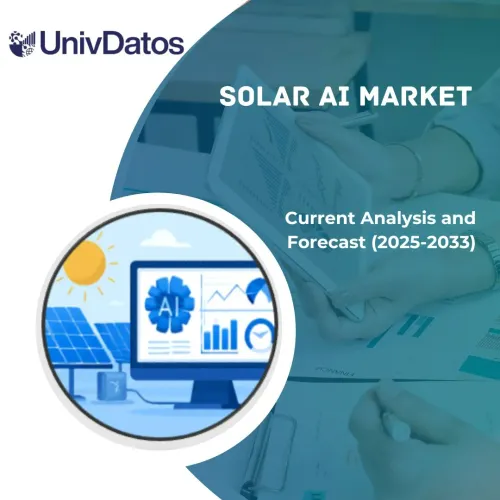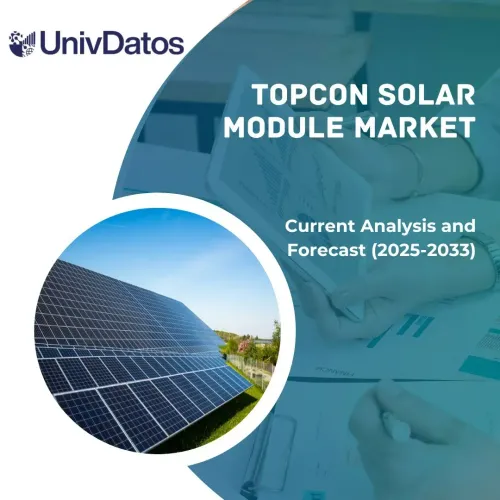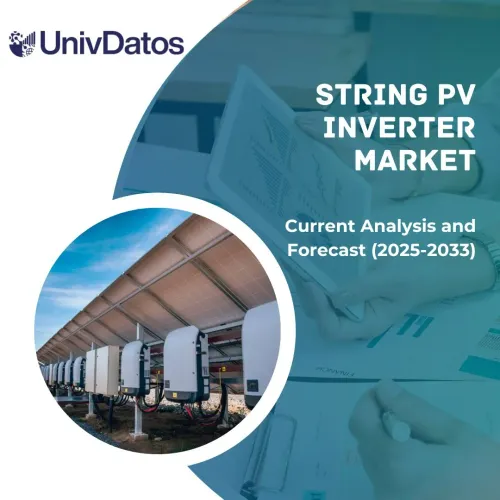- Home
- About Us
- Industry
- Services
- Reading
- Contact Us
Wind Powered Water Pump Market: Current Analysis and Forecast (2023-2030)
Emphasis on Mechanism (Electrical Pump, Mechanical Pump); Component (Mild Steel Frames, Rotor Blades, Pneumatic Cylinder, Slider Crank Discs, Shafts, and Ball Bearing); Capacity (<2.5 KWh, 2.5 KWh – 10 KWh, and >10 KWh); End-Use (Irrigation, Off-Grid Water Supply, Water Treatment Plants); and Region/Country
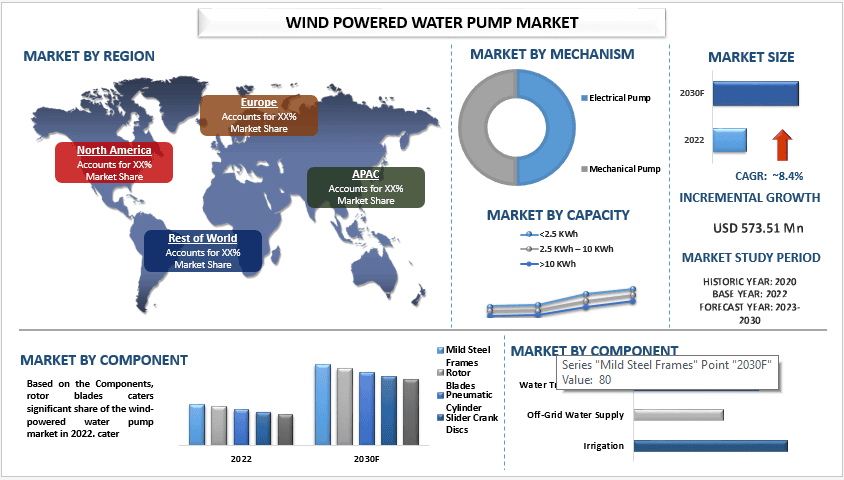
Global Wind-powered water pump Market is expected to reach USD 308.19 Million in 2030 by growing at a CAGR of 8.4%. during the forecast period 2023-2030. Initiatives such as targets, subsidies, and grants from supportive government policies, along with a surge in the adoption of renewable energy, aim to make renewable technology economically viable to individuals. By reducing the cost of installation and operations, these factors are making it easier for people to adopt renewable energy. Growing environmental consciousness has led to increased awareness of sustainable agriculture and water management practices. Consequently, farmers and agriculture enterprises worldwide are seeking alternative methods of water supply to reduce their reliance on conventional fossil fuel-powered pumps.
Grundfos Holding A/S, IWAKI CO. Ltd’, Solaris Energy Inc, WinWind, GE Renewable Energy, Greenko Group, FCC Aqualia, Lorentz, Aermotor Windmill Company, and Bergey Windpower Co are some of the key players in the market. These players have undertaken several M&As and partnerships to facilitate customers with hi-tech and innovative products/technologies.
Insights Presented in the Report
“Amongst mechanism, electrical pump category to witness higher CAGR during the forecast period.”
Based on the mechanism, the wind-powered water pump market is bifurcated into electrical pumps and mechanical pumps. The electrical pump segment caters to significant demand in 2022. This is mainly owing to their flexibility as they are controlled by computers and thus can be efficiently compared to mechanical pumps. Moreover, water scarcity in the world is a major factor driving the demand for electrical pumps in the irrigation industry which will eventually escalate the market size of the wind-powered water pump market.
“Amongst end-use, the irrigation segment to hold a significant share in the market in 2022.”
Based on end-use, the wind-powered water pump market is categorized into irrigation, off-grid water supply, and water treatment plants. The irrigation segment acquired an extensive share of the wind-powered water pump market in 2022. Water-pumping windmills can pump water from depths of up to 60 meters. They have an advantage over other conventional means of water pumping as no fuel is required to operate them. This makes them ideal for installation in remote windy areas where other means of water pumping are not feasible.
“North America to hold a considerable share in the market.”
Europe is expected to experience the highest share in the wind-powered water pump market. The primary factor driving this growth is the increase in the onshore wind capacity to meet the net zero vision. In addition, the ability of airborne wind energy to be cost-competitive with other generation sources at a commercial scale by 2030 as AWE has lower logistics requirements than established wind technology, which allows it to be installed in places that established wind cannot reach is further accelerating the market size of wind-powered water pump in Europe.
Report Coverage
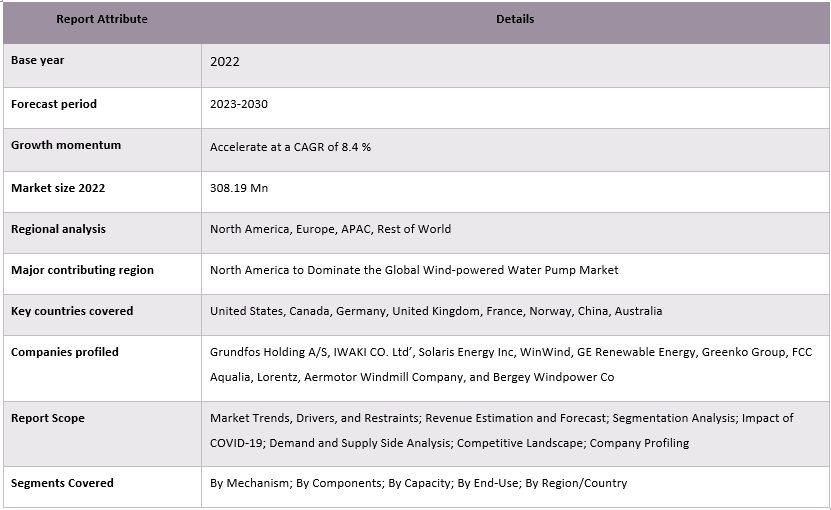
Reasons to buy this report:
- The study includes market sizing and forecasting analysis validated by authenticated key industry experts.
- The report presents a quick review of overall industry performance at one glance.
- The report covers an in-depth analysis of prominent industry peers with a primary focus on key business financials, product portfolio, expansion strategies, and recent developments.
- Detailed examination of drivers, restraints, key trends, and opportunities prevailing in the industry.
- The study comprehensively covers the market across different segments.
- Deep dive regional level analysis of the industry.
Customization Options:
The global Wind-powered water pump market can further be customized as per the requirement or any other market segment. Besides this, UMI understands that you may have your own business needs, hence feel free to connect with us to get a report that completely suits your requirements.
Table of Content
Research Methodology for the Wind-Powered Water Pump Market Analysis (2023-2030)
Analyzing the historical market, estimating the current market, and forecasting the future market of the global Wind-powered water pump market were the three major steps undertaken to create and analyze the adoption of Wind-powered water pump in major regions globally. Exhaustive secondary research was conducted to collect the historical market numbers and estimate the current market size. Secondly, to validate these insights, numerous findings and assumptions were taken into consideration. Moreover, exhaustive primary interviews were also conducted, with industry experts across the value chain of the global Wind-powered water pump market. Post assumption and validation of market numbers through primary interviews, we employed a top-down/bottom-up approach to forecasting the complete market size. Thereafter, market breakdown and data triangulation methods were adopted to estimate and analyze the market size of segments and sub-segments of the industry pertains to. Detailed methodology is explained below:
Analysis of Historical Market Size
Step 1: In-Depth Study of Secondary Sources:
Detail secondary study was conducted to obtain the historical market size of the Wind-powered water pump market through company internal sources such as annual reports & financial statements, performance presentations, press releases, etc., and external sources including journals, news & articles, government publications, competitor publications, sector reports, third-party database, and other credible publications.
Step 2: Market Segmentation:
After obtaining the historical market size of the Wind-powered water pump market, we conducted a detailed secondary analysis to gather historical market insights and share for different segments & sub-segments for major regions. Major segments are included in the report as a mechanism, component, capacity, and end-use. Further country-level analyses were conducted to evaluate the overall adoption of testing models in that region.
Step 3: Factor Analysis:
After acquiring the historical market size of different segments and sub-segments, we conducted a detailed factor analysis to estimate the current market size of the Wind-powered water pump market. Further, we conducted factor analysis using dependent and independent variables such as mechanism, component, capacity, and end-use of Wind-powered water pump. A thorough analysis was conducted of demand and supply-side scenarios considering top partnerships, mergers and acquisitions, business expansion, and product launches in the Wind-powered water pump market sector across the globe.
Current Market Size Estimate & Forecast
Current Market Sizing: Based on actionable insights from the above 3 steps, we arrived at the current market size, key players in the global Wind-powered water pump market, and market shares of the segments. All the required percentage shares split, and market breakdowns were determined using the above-mentioned secondary approach and were verified through primary interviews.
Estimation & Forecasting: For market estimation and forecast, weights were assigned to different factors including drivers & trends, restraints, and opportunities available for the stakeholders. After analyzing these factors, relevant forecasting techniques i.e., the top-down/bottom-up approach were applied to arrive at the market forecast for 2030 for different segments and sub-segments across the major markets globally. The research methodology adopted to estimate the market size encompasses:
- The industry’s market size, in terms of revenue (USD) and the adoption rate of the Wind-powered water pump market across the major markets domestically
- All percentage shares, splits, and breakdowns of market segments and sub-segments
- Key players in the global Wind-powered water pump market in terms of products offered. Also, the growth strategies adopted by these players to compete in the fast-growing market.
Market Size and Share Validation
Primary Research: In-depth interviews were conducted with the Key Opinion Leaders (KOLs) including Top Level Executives (CXO/VPs, Sales Head, Marketing Head, Operational Head, Regional Head, Country Head, etc.) across major regions. Primary research findings were then summarized, and statistical analysis was performed to prove the stated hypothesis. Inputs from primary research were consolidated with secondary findings, hence turning information into actionable insights.
Split of Primary Participants in Different Regions
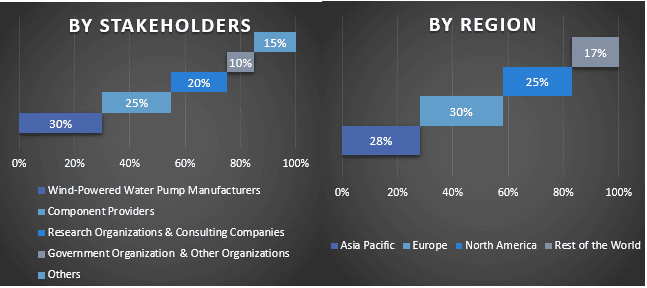
Market Engineering
The data triangulation technique was employed to complete the overall market estimation and to arrive at precise statistical numbers for each segment and sub-segment of the global Wind-powered water pump market. Data was split into several segments & sub-segments post studying various parameters and trends in the areas of mechanism, component, capacity, and end-use in the global Wind-powered water pump market.
The main objective of the Global Wind-powered water pump Market Study
The current & future market trends of the global Wind-powered water pump market were pinpointed in the study. Investors can gain strategic insights to base their discretion for investments on the qualitative and quantitative analysis performed in the study. Current and future market trends determined the overall attractiveness of the market at a regional level, providing a platform for the industrial participant to exploit the untapped market to benefit from a first-mover advantage. Other quantitative goals of the studies include:
- Analyze the current and forecast market size of the Wind-powered water pump market in terms of value (USD). Also, analyze the current and forecast market size of different segments and sub-segments.
- Segments in the study include areas of mechanism, component, capacity, and end-use.
- Define and analysis of the regulatory framework for the Wind-powered water pump
- Analyze the value chain involved with the presence of various intermediaries, along with analyzing customer and competitor behaviors of the industry.
- Analyze the current and forecast market size of the Wind-powered water pump market for the major region.
- Major countries of regions studied in the report include Asia Pacific, Europe, North America, and the Rest of the World.
- Company profiles of the Wind-powered water pump market and the growth strategies adopted by the market players to sustain in the fast-growing market.
- Deep dive regional level analysis of the industry
Frequently Asked Questions FAQs
Q1: What is the current market size and growth potential of the global Wind-powered water pump market?
Q2: What are the driving factors for the growth of the global Wind-powered water pump Market?
Q3: Which segment has the largest share of the global Wind-powered water pump market by Type?
Q4: What are the emerging technologies and trends in the global Wind-powered water pump market?
Q5: Which region will dominate the global Wind-powered water pump market?
Q6: Who are the key players operating in the global Wind-powered water pump market?
Related Reports
Customers who bought this item also bought


